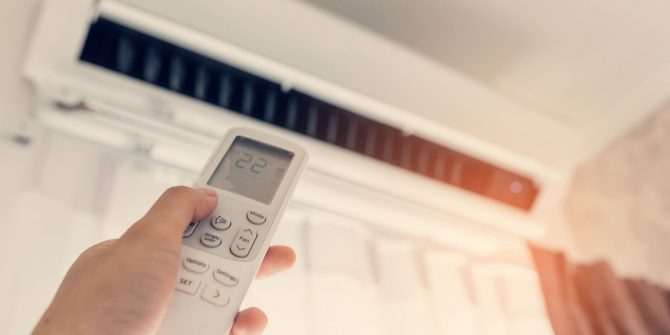The air conditioning market is booming. With more than 20 companies selling room air conditioners in India, the current market size is estimated to be around 4.5 million. It is poised to grow at a CAGR of 15% in 2020 to stand at 7.7 million by the end of the year. With AC penetration in India at just 8%, there is considerable potential for growth, given increasing rural electrification, a rise in disposable incomes and the development of smart cities.
Additionally, with a variety of options in the market, consumers can purchase products tailored to their unique needs.
However, considering the vast AC market, before one zero in on a product of their choice, they should take into account a variety of factors to make the most of their AC purchase.
Here are a few points to consider when buying an air conditioner for your home this summer:
- Energy rating: Look for the ISEER (Indian Seasonal Energy Efficiency Ration) and BEE (Bureau of Energy Efficiency) star rating of an air conditioner to know how energy efficient it is. A higher rating indicates less power consumption and higher energy efficiency. Choose an AC based on your daily usage. For instance, a 3-star unit might suffice for a family which runs an AC for 3 to 4 hours daily, while another with 8-hour usage might require a 5 star AC to reduce electricity bills.
- Portability: Window and split ACs are the most popular options. However, both of these are fixed and come with a lengthy installation process. Instead, you can buy a Portable AC that comes with wheels and can be installed easily at home with the accompanying kit. Portable models also come with a fan and dehumidifier and are ideal for those living in a small space or rented houses. A portable AC is also pocket-friendly and can be purchased at zero down payment on easy EMIs.
- AC Tonnage: First of all, determine your room size and choose an air-conditioner that is appropriate for it. A 0.8-ton unit is sufficient to cool a 100 square feet room, a 1 ton AC is suitable for 150sq.ft and so on. You might also need to consider the temperature conditions, humidity, exposure to sunlight as well as the floor you stay on and accordingly choose the right tonnage for optimum cooling.
- Air Filters: Rising pollution levels mean that the air that we breathe contains a lot of harmful pollutants. Most ACs come with filters to remove dust, pollen, bacteria, fungi, and bad odors from the air outside. Some also come with a PM 2.5 filter to rid the air that you breathe indoors of harmful particulate matter. Such filters also enhance the cooling and energy performance of the AC unit.
- Inverter: An inverter AC can be expensive but it makes up for its high purchase price by consuming less power and bringing down your electricity bills in the long run. You can purchase ACs with single or twin inverters at zero down payments on easy EMIs to save on high purchase prices. Enjoy the double benefit of even and longer cooling along with energy efficiency with an inverter AC.
Some of the other specifications to keep in mind include looking out for a noise level below 50 DB, copper condenser coils for durable performance, fire safety functionalities, an appropriate blower size, and air swing function among others.
Make sure that the technology and features are in tune with your requirements and ensure proper installation for better performance in the long run. Do not forget to ask the retailer for warranty.

